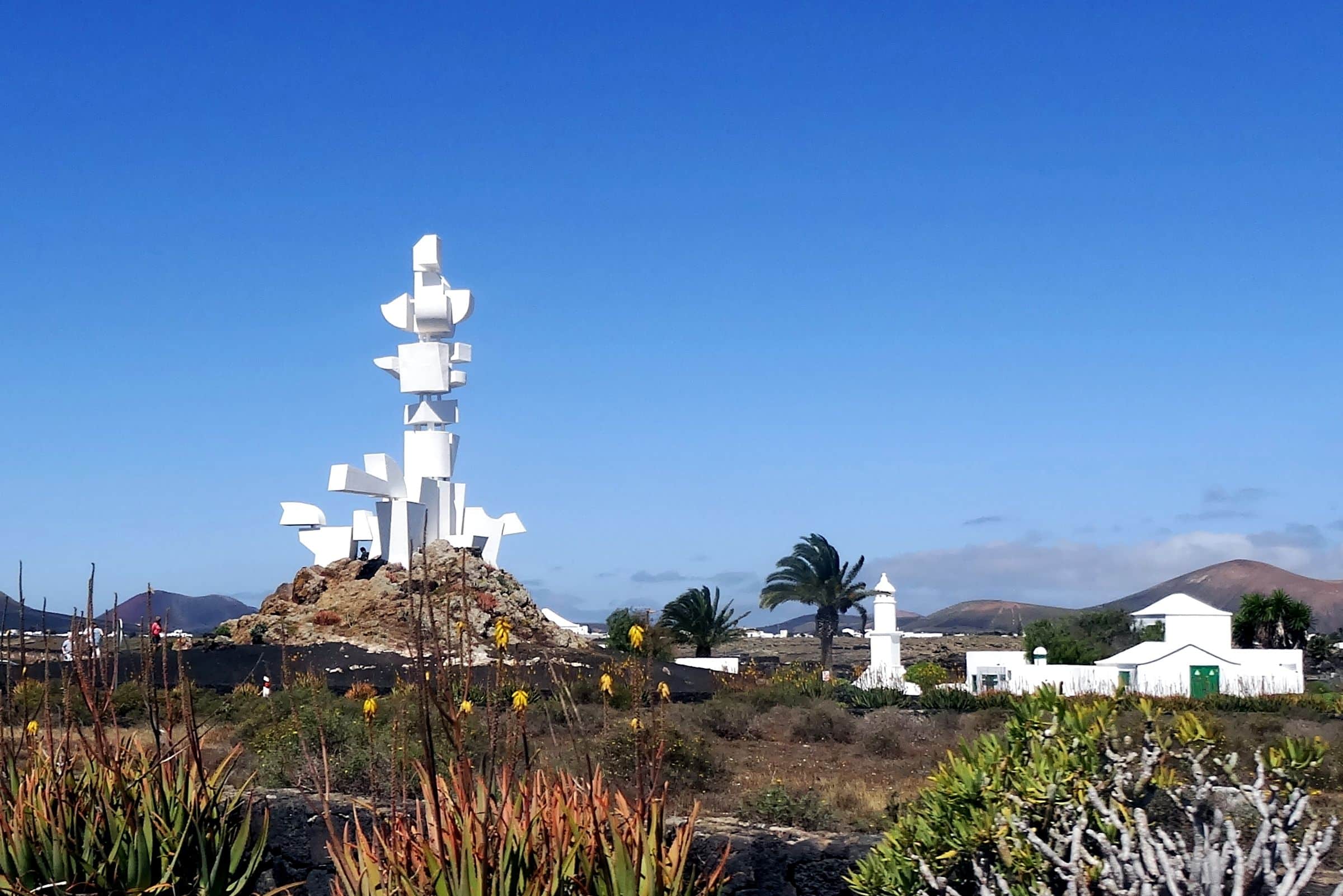Museum César Manrique’s house in Haría
The former residence of architect and artist César Manrique in Haría, where he spent the last few years until his sudden death, has been a popular tourist attraction for locals and tourists since 2013.
It offers you a good insight into the life of the famous artist, who played a major role in the painting of the island of Lanzarote.
Since 2013, this building, ” César Manrique’s house ” also known as the Palm House, has been a museum.

He renovated this old and run-down farmhouse, which he had already bought in the 1970s and created the surrounding area by keeping the natural atmosphere as lively as possible.
His modern visions of aesthetics and comfort have been combined with traditional architecture.
Unfortunately, Manrique could only experience the place until his accidental death in 1992, near the Fundacion Cesar Manrique in Tahiche.
Today the César Manrique’s house in Haría offers us the opportunity to immerse ourselves in the life of this famous artist for a while.
You can move freely through the rooms and also a part of the palm garden is accessible for visitors.
Most of the furniture and things that César Manrique used during his work as an artist are exactly as he had left them on the day of his death on September 25, 1992. The whole property – house, the atelier and the garden, separated from it, convey a particularly quiet and cosy atmosphere.
In the workshop where the artist painted back then, the original scenario can be seen.
Colours, tables with drawings, easels and unfinished paintings were stored as César Manrique left them.
There are also many information materials about César Manrique’s work and his extraordinary life.
A very interesting film shows deep insights into his special character.
It is therefore advisable to allow sufficient time during a visit to the César Manrique Museum.
Opening hours and entrance fees
The César Manrique Museum in Haria is open daily, except on public holidays.
open from 10:30 a.m. to 18:00 p.m.
Last admission at 5:30 pm
Admission: 10 €
Children up to 12 years: 1 €
Combination + César Manrique Foundation in Tahíche: 15€
Available at the Residence – Museum (Haría)
and at the César Manrique Foundation (Tahíche)
Phone: +34 928 843 138
webpage of César Manrique’s house in Haría
It is not allowed to take pictures inside the house / museum of César Manrique in Haría.
Ticket price for children under 12 years: 1€
You can buy a combi-ticket and receive a discount for the foundation César Manrique in Tahiche and the house-museum in Haría.
MON-SUN 10:30am-6pm
Calle Elvira Sánchez, 30, 35520 Haría, Las Palmas







 was built by César Manrique in 1968. It is also called Monumento al la Fecundidad – “Monument of Fertility”.
was built by César Manrique in 1968. It is also called Monumento al la Fecundidad – “Monument of Fertility”.